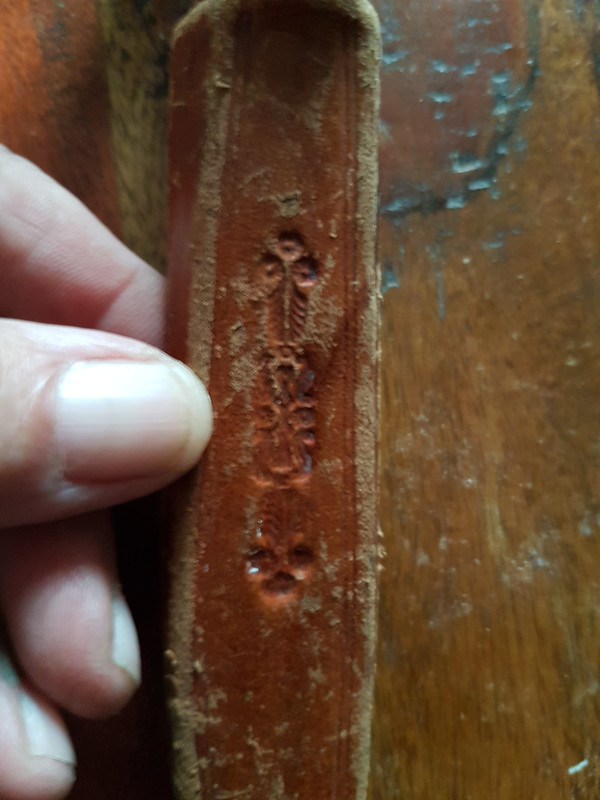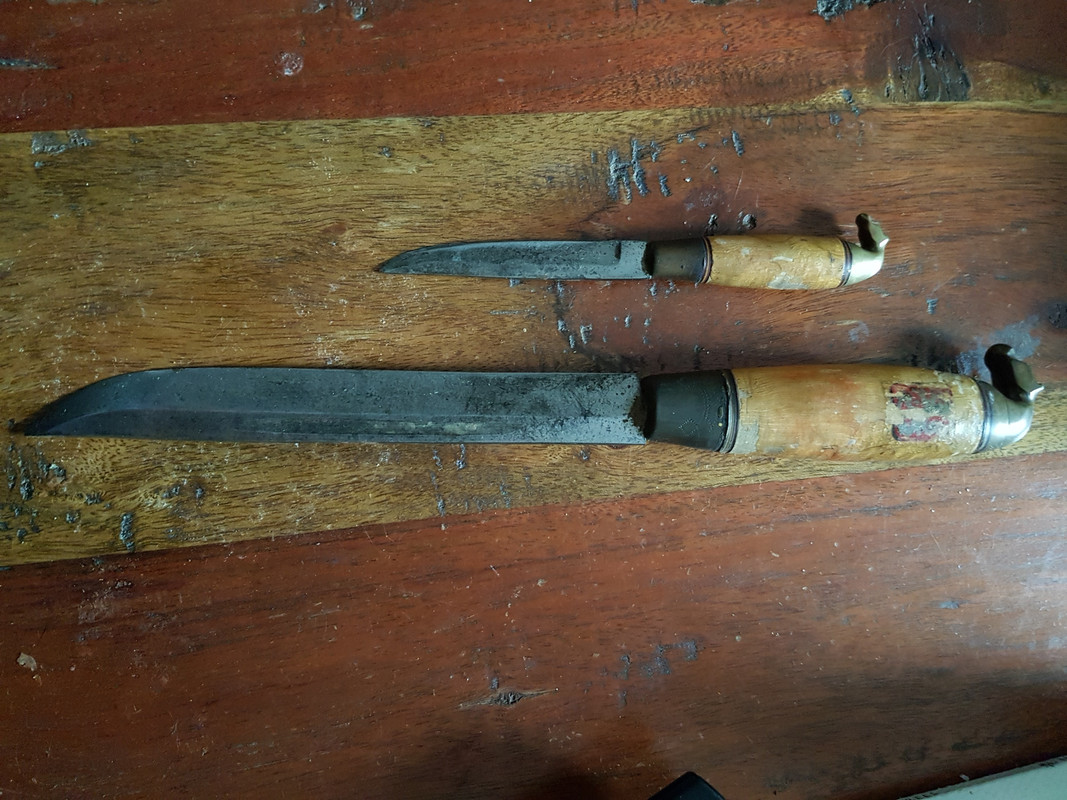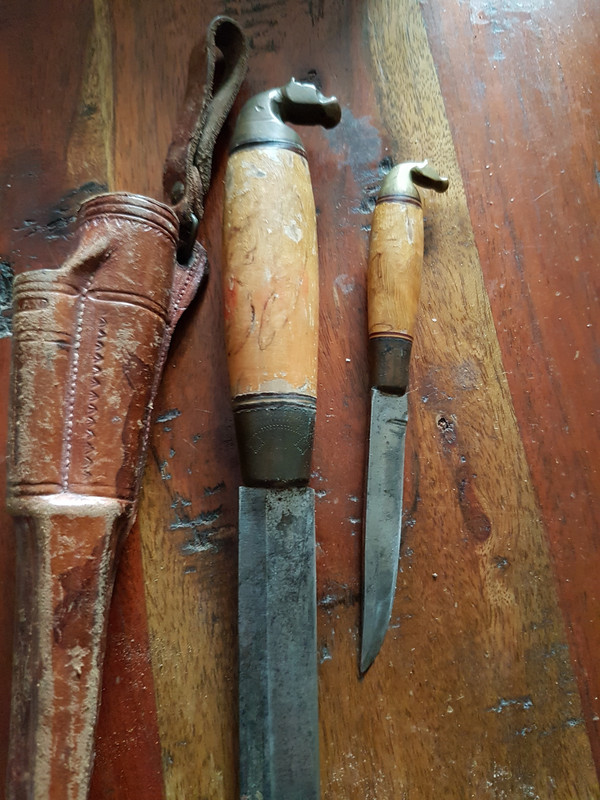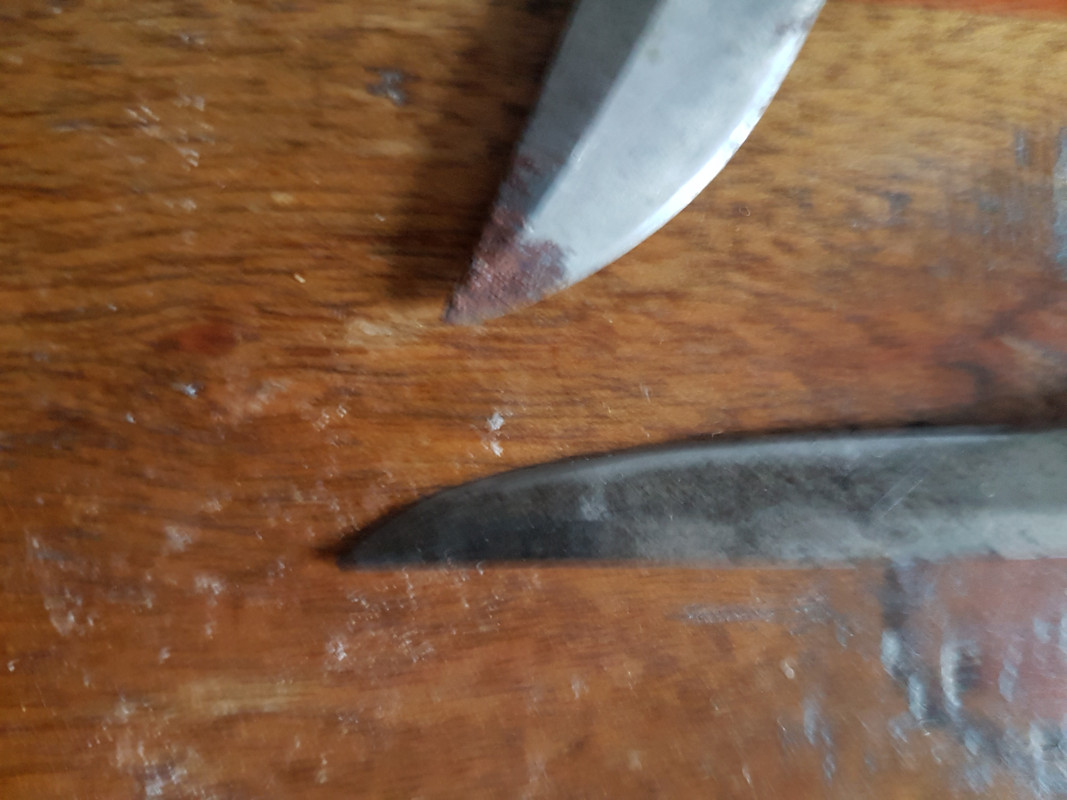


Unfortunately, the tip of the large knife looks like this....

Does anyone know where in Scandinavia they come from? Maker perhaps?




Nice!
Finnish. Maybe Mäkipelkola?
I always mentally connect these knives with the Finnish gypsies. I know this is wrong, but that is where I used to see them being displayed, as a part of the ethnic costume there guys wore.
I would just remove the rust using normal rust removal ( phosforic acid) then clean everything.
After a good dry I would use leather polish on the leather, a furniture polish on the wood and a bit of oil on the blades.
Personally I would not polish the brass horses heads. These knives are old, do not try to make them new. Patina.
Preserve.
Also, I would not personally sharpen or use them.
If you like to use knives like this, you can buy modern ones!
These can be made maybe 60-80 years ago, but most likely not during WW2, as brass was a restricted material and leather in short supply.
AgreedSundowner, you must have horse shoes in your pocket.
I would do absolutely nothing to them until I was 100% positive of their provenance.
Then maybe clean but not to look factory-fresh. Their value could be lost entirely with a total polish.
That is exactly what it was as it is hard to make out!!Btw, if you look closely, do you see any enscratched writing on the blades?
That decal, is it a stylised lion?
If it is, compare to the Finnish national heraldic lion ( search online) .
No, brass and leather were available, except during WW2.Checked it, probably made between 1940 and 1960 as leather and brass were hard to come by before that time. Apparently they used birch bark for sheath before 1940
